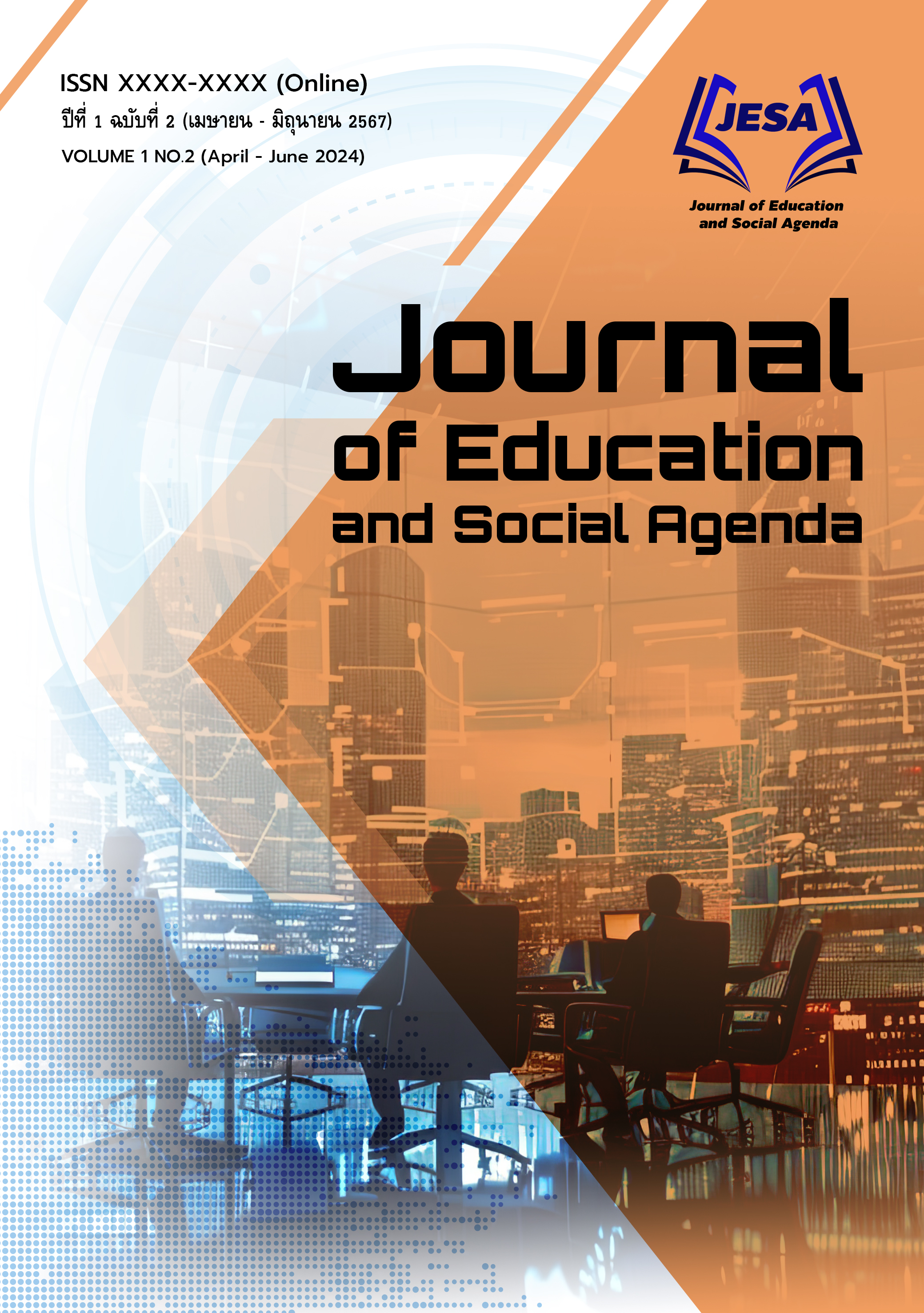People’s Participation in Buddhist Tourism Management Based on the Seven Principles of Aparihàniyadhamma Mueang Uthai Thani District Uthai Thani Province
Keywords:
Public Participation, Buddhist Tourism, AparihàniyadhammaAbstract
This research article aims to: 1) examine the level of public participation, 2) explore the relationship between Buddhist tourism management based on the principles of Aparihaniyadhamma in temples and public participation, and 3) identify approaches to enhance public participation in Buddhist tourism management in Mueang Uthai Thani District, Uthai Thani Province. The study employed a mixed-methods approach, utilizing a questionnaire with a reliability coefficient of .990. The sample size, determined using the Krejcie & Morgan table, consisted of 372 respondents. The statistical tools used for analysis included mean, standard deviation, Pearson's correlation coefficient, and qualitative research through in-depth interviews with 15 key informants selected through purposive sampling. A semi-structured interview guide was used as the research instrument. The research findings revealed that: 1) the overall level of public participation in Buddhist tourism management in Mueang Uthai Thani District, Uthai Thani Province was low ( = 2.34, S.D. = 1.11). When examined individually, all aspects were rated at a low level. 2) There was a highly significant positive correlation between Buddhist tourism management based on the principles of Aparihaniyadhamma and public participation in Buddhist tourism management in Mueang Uthai Thani District, Uthai Thani Province (r = 0.907), with statistical significance at the 0.01 level. 3) The approaches to enhancing public participation included: 3.1) fostering a positive attitude towards participation by encouraging community support, 3.2) organizing consistent and meaningful Buddhist tourism activities, 3.3) building teams and fostering collaboration, 3.4) ensuring benefits are integrated and shared among all stakeholders, 3.5) managing Buddhist tourism in accordance with the principles of Aparihaniyadhamma, and 3.6) conducting regular evaluations.
References
กรมทรัพยากรน้ำ. (2557). การมีส่วนร่วมของประชาชน. สาระสารสอน, 2(3), 3.
เกียรติขจร วัจนะสวัสดิ์. (2550). การมีส่วนร่วมของประชาชนต่อการดำเนินนโยบายของรัฐบาลด้านการบริการจัดหางาน. กรุงเทพฯ : กองแผนงานและสารสนเทศ กรมการจัดหางาน กระทรวงแรงงาน.
พระครูพิจิตรวรเวท, พระอุดมสิทธินายก, พระปลัดระพิน พุทฺธิสาโร, และพระมหาสุเมฆ สมาหิโต. (2565). การมีส่วนร่วมของวัดและชุมชนในการอนุรักษ์ประเพณีการแข่งขันเรือยาว จังหวัดพิจิตร. วารสารวิจยวิชาการ, 5(2), 1-14.
พระครูสังฆรักษ์วุฒิพงษ์ วุฑฺฒิวํโส. (2561). รูปแบบการพัฒนาวัดในประเทศไทยเป็นแหล่งเรียนรู้เชิงพุทธ เพื่อส่งเสริมการท่องเที่ยวอาเซียน. (ดุษฎีนิพนธ์พุทธศาสตรดุษฎีบัณฑิต สาขาวิชาพุทธบริหารการศึกษา). บัณฑิตวิทยาลัย : มหาวิทยาลัยมหาจุฬาลงกรณ์ราชวิทยาลัย.
พระมหาพงศกร ฐิตญาโณ (มะลิลา), พระครูนิวิฐศิลขันธ์ และพระราชรัตนเวที. (2564). ประสิทธิผลการขับเคลื่อนโครงการวัด ประชา รัฐ สร้างสุข ตามแนวทาง 5ส ของวัดในอำเภอโกรกพระ จังหวัดนครสวรรค์. วารสารวิจยวิชาการ, 4(4), 1-13.
พระมหามงคล ฐานิสฺสโร (หวังนอก) และซิสิกกา วรรณจันทร์. (2562). การจัดการท่องเที่ยวทางวัฒนธรรมเชิงศาสนาภายในวัดของชุมชนภาคอีสานตอนล่าง. วารสารบัณฑิตวิทยาลัย พิชญทรรศน์, 14(2), 105-112.
พระแมนรัตน์ จตฺตมโล, พระสมุทรวชิรโสภณ และพระครูวาทีวรวัฒน์. (2562). การพัฒนาวัดเพื่อการท่องเที่ยวเชิงวัฒนธรรม อำเภอบางคนที จังหวัดสมุทรสาคร. วารสารสหวิทยาการนวัตกรรม, 2(2), 24-33.
พระศรีสุทธิพงศ์ (สมส่วน ปฏิภาโณ). (2564). การจัดการมรดกโลกโดยการมีส่วนร่วมของพระสงฆ์และประชาชนเพื่อการท่องเที่ยวเชิงพุทธ. วารสารบัณฑิตศึกษาปริทรรศน์ วิทยาลัยสงฆ์นครสวรรค์, 9(1), 57-70.
พระสาธิต ฐิตวีริโย (สุดเทศ), พระครูนิวิฐศีลขันธ์ และพระราชรัตนเวที. (2562). การมีส่วนร่วมของชุมชนในการจัดการท่องเที่ยวในตำบลฬ่อ อำเภอเมืองพิจิตร จังหวัดพิจิตร. วารสารวิจยวิชาการ, 2(3), 99-112.
วันชัย วัฒนศัพท์ และคณะ. (2551). คู่มือการมีส่วนร่วมของประชาชน การตัดสินใจที่ดีกว่าโดยให้ชุมชนมีส่วนร่วม. ขอนแก่น : โรงพิมพ์ศิริภัณฑ์ ออฟเซ็ท.
Krejcie, R. V. & Morgan, D. W. (1970). Determining sample size for research activities. Educational and Psychological Measurement, 30(3), 607-610.

Downloads
Published
How to Cite
Issue
Section
License

This work is licensed under a Creative Commons Attribution-NonCommercial-NoDerivatives 4.0 International License.
This article is published under a Creative Commons Attribution-NonCommercial-NoDerivatives 4.0 International License (CC BY-NC-ND 4.0), which allows others to share the article with proper attribution to the authors and prohibits commercial use or modification. For any other reuse or republication, permission from the journal and the authors is required.
